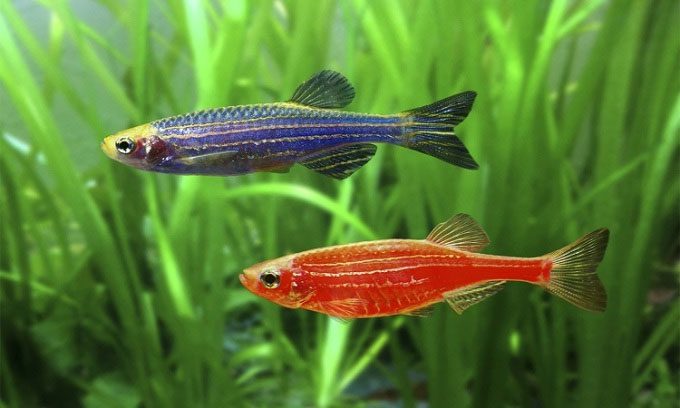Genetically modified zebrafish that glow in various colors have escaped from fish farms, potentially disrupting biodiversity in the Atlantic Forest.

Genetically modified zebrafish (Danio rerio) can emit red, blue, and green light. (Photo: Paulo Oliveira/Minden)
Scientists have found the presence of genetically modified zebrafish in southeastern Brazil and discovered that they are breeding in waters near nearby fish farms, according to a new study published in early February in the journal Neotropical Fauna and Environment. The genetically modified zebrafish have been bred with edited genes to produce different traits, in this case, luminescence under certain lighting conditions. Genetically modified animals are very popular in aquariums and the commercial fish market. The glowing zebrafish even have the commercial name Glofish.
Despite being bred in captivity, some fish have escaped into the rural areas surrounding the farms. They are in the early stages of the invasion process and have the potential to continue spreading, according to researcher André Magalhães from the Federal University of São João.
Magalhães and his colleagues are studying the biology of zebrafish in the headwaters near the aquaculture center in Muriaé, northern Rio de Janeiro. The fish farming center and the research team suspect that they escaped from commercial cages. They report that genetically modified glowing zebrafish are thriving in the area, feeding on aquatic insects.
Zebrafish are native to Southeast Asia and have been well-known to geneticists since the 1990s due to various characteristics, including the development of embryos outside the body, making them a popular choice for scientists studying genetic analysis and modification. The colorful glowing zebrafish have recently become a commercial success and are an attractive option for aquariums. Zebrafish are often modified by adding genes from luminescent animals such as jellyfish or corals so that they can glow in a similar manner.
The existence of this zebrafish species at the edge of one of Brazil’s most biodiverse areas in the Atlantic Forest is concerning because if they succeed in spreading further, they could disrupt the balanced ecosystems nearby.




















































